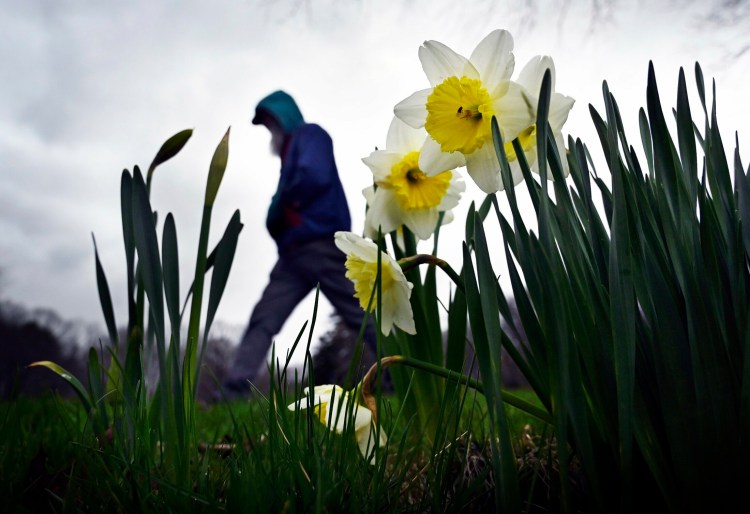It’s well into June and I am still wearing flannel shirts while gardening, I have yet to wear shorts (I know some people wear them in the dead of winter but I think they are nuts or at the very least, misguided), and I’ve had to use sunscreen only on my ears, and that about six times.
While I crave some warm and sunny days for my personal comfort and happiness, the cool and damp spring has not been devastating for garden plants – neither for the flowers nor the edibles.
For starters, we haven’t had to drag out the hoses once. I have used water from our rain barrels (which have never been less than three-quarters full this spring) many times to water newly planted shrubs, transplanted perennials and items such as onions, seeds and seedlings in the vegetable garden. But this is standard, good-gardening practice, not forced by any vagaries of the weather.
And it’s a nice change.
Since 2016, I have written a column about the lack of rain every year – one appeared as early as June 3. It was getting to be a bore.
As is usually the case with these columns, I am discussing home gardening, not commercial farming. Farmers depend on what they grow to earn a living, far more serious than gardening for pleasure and the benefits of enjoying super-fresh food.
The cool start delayed asparagus production, which hurt some farmers. But my wife, Nancy, and I had enough for my May 15 birthday dinner, and the production since then has been bountiful – we’ve actually given away some asparagus this year. For us, in other words, the delayed season hasn’t been difficult. And we still are harvesting asparagus, although production has slowed.
I had made a decision to plant some of our tomatoes and peppers under a plastic row cover, and those are doing well. The ones we planted unprotected on Memorial Day weekend have survived, although they haven’t made a lot of progress so far.
Looking at the strawberry blossoms, I know it will be late June before any ripen, whereas some years I have been eating strawberries by the time this column appears in print. But the plants have a lot of healthy-looking blossoms, so I expect a good, if late, crop. Delaying the pleasure sometimes makes it sweeter.
The cool spring has been a special benefit for shrubs that flower in the spring.

You may not have liked the cool, rainy spring, but the forsythia and other flowering shrubs definitely did. Brianna Soukup/Staff Photographer)
Nancy and I are not fans of forsythia. Cold temperatures often kill the parts of the plants not covered by snow, and the blooms often go by in less than a week as soon as temperatures get up into the 70s. With this spring’s cool temperatures, though, forsythia remained beautiful for almost a month. The last of the bright yellow blossoms were still in great shape along the coast on Memorial Day weekend, almost a month after they first showed up.
Other plants blossomed later, but had the blossoms last longer. PJM rhododendrons and their small-leaved cousins also had an extended bloom time, even though they began blossoming a bit late. Our magnolias were better than ever, and we heard the same from many others.
We have photos of our daughter’s wedding day, which was May 19 a quarter century ago, that show azaleas in our back yard in full blossom. Those same bushes – quite a bit larger now – didn’t flower until almost June this year, but still look gorgeous in mid-June.
The same is true of the lilacs, which were almost ready for that wedding but were not ready to be cut until June 1 this year.
All of the bulbs – tulips, daffodils, alliums and others – have kept their flowers longer than in past years. And their beauty means we will plant more bulbs this fall.
I may have grumbled regularly about the almost constant cloud cover, frequent rain and cold temperatures this year. That is what people do – we all want everything to be perfect.
But I can live with this year’s weather.
Looking back at the three last growing seasons, when our rain barrels were often empty and we had to haul out the hoses to keep our vegetable garden, lawn and perennial beds in good shape, I can stand more days of wearing flannel and a slight delay in the growth of my plants. None of the plants is in danger of dying.
That doesn’t mean we won’t end up with hot and dry weather, maybe even a drought, later this summer. Weather can change quickly.
But at least we know we are starting with plenty of water in the aquifers.
TOM ATWELL is a freelance writer gardening in Cape Elizabeth. He can be contacted at: tomatwell@me.com
Send questions/comments to the editors.



Comments are no longer available on this story